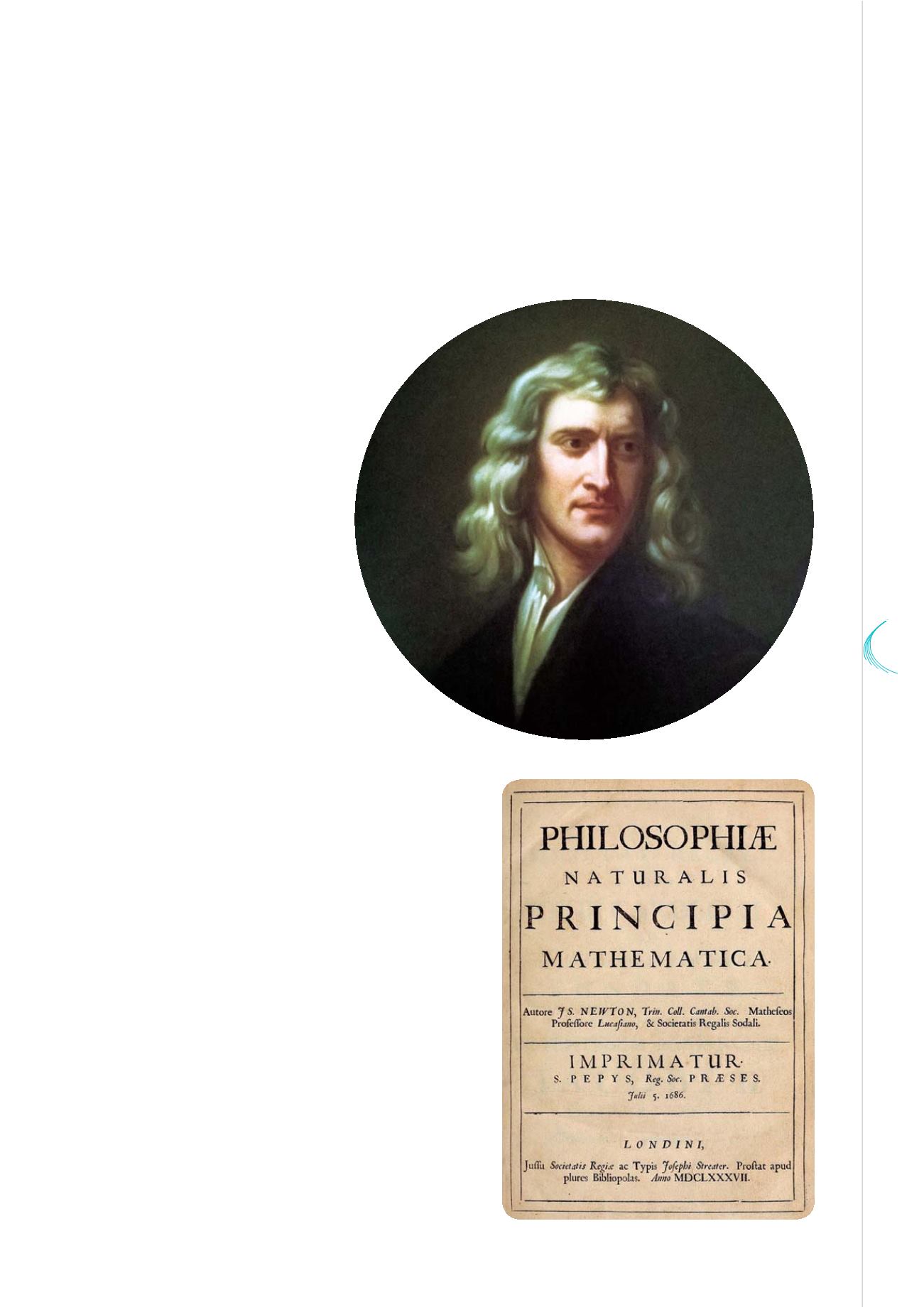

350
YEARS
OF
SCIENCE
81
© H.S. Photos - Alamy
Philosophiae Naturalis Principia Mathematica
(1687) would make Isaac Newton (1642-1727)
one of the most influential men of all times.
© Catherine Bréchignac - Académie des Sciences
clock was a revolution in how we measure time, although that was only one of the feats that brought him to be
chosen among Colbert’s very first recruits at the Académie des Sciences.
Huygens, Newton, Leibniz, the Bernoullis: those would become the most famous heroes of the mathematical
revolution that would break out in this second half of the 17
th
Century. Strong personalities who would influence
one another, join forces, tear one another to pieces, challenge and sometimes insult one another in letters almost
only them could fully appreciate; within a few decades, they would produce several treatises that count among the
most important of the history of science.
Emblematic of this period was Newton’s
PhilosophiaeNaturalisPrincipiaMathematica
,
a work published in 1687 that, as its
title foretells, aims at developing the
mathematical foundations underlying
our knowledge of the world.
Such an ambitious programme
would make its author one of the
most influential men of all times.
As emblematic was the birth of
infinitesimal, differential and integral
calculus, a very powerful tool with
major applications in modern analysis,
allowing the variations of functions to
be quantified. And no less emblematic was
the ferocious quarrel that opposed Newton and
Leibniz on the first paternity of differential calculus – a
preamble to the relative isolation in mathematics from
which Great Britain would suffer for two large centuries;
more dramatically, in France, religious persecution
resumed and it would eventually drive Huygens away
from this country.
Here is a famous excerpt from a letter Newton wrote
to Leibniz, in a time when they were not so cross
with each other:
6accdae13eff7i3l9n4o4qrr4s8t12ux
.
That is how Newton, a true amateur of mysteries, had
encoded the Latin and hardly less mysterious sentence
"
Data aequatione quotcunque fluentes quantitates
involvente, fluxiones invenire; et vice versa
", for which
the mathematician Vladimir Arnold suggested the
following free translation: "
It is useful to solve differential


















